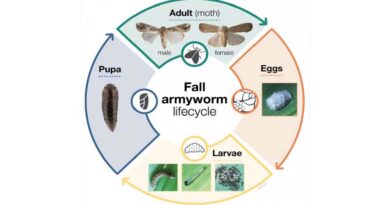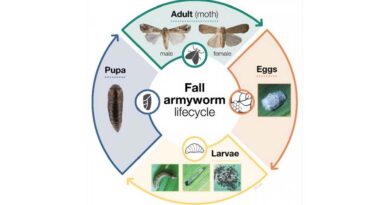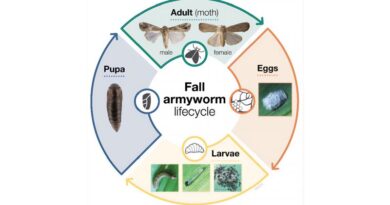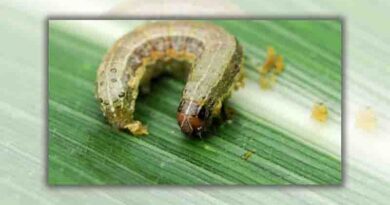Understanding the threat of fall armyworm in New Zealand
20 July 2022, New Zealand: After fall armyworm was found in Tauranga in March, primary sector partners have ramped up research to understand what level of threat the pest poses to production crops and native species, and how it should be managed going forward.
While there have not been any further finds in the region, fall armyworm larvae have been found on regrowth maize and corn crops on 21 properties in the Waikato, Auckland, Waitara, Taranaki and Gisborne.
The pest, in the right conditions, is capable of many successive cycles of reproduction and of reaching a critical mass that can wipe out a crop overnight – hence the military reference.
“It can be a really big problem in young corn if it gets into the whorl of the plant, effectively destroying it,” says Processed Vegetables New Zealand chief executive, Richard Palmer.
Native to the Americas, fall armyworm (Spodoptera frugiperda) has been spreading across the globe in recent years to Africa and Asia and was found in Australia in 2020. Biosecurity authorities have been aware for some time that wind could carry the pest over the Tasman, as the moths are known to be able to travel long distances.
The good news is that it’s widely believed to be too cold in New Zealand for the pest to thrive. In order to reach the number of reproductive cycles required to go on the march, it needs a tropical climate.
The bad news is that fall armyworm has a taste for more than 350 plant species. In particular, it likes maize and corn, but also a wide variety of other production plants including those in the brassica and the nightshade families – tomatoes, potatoes, capsicums and aubergines, as well as asparagus, beans, peas, beetroot and lettuce.
A lot hangs on whether it can survive through the winter, as to whether it will become a problem for croppers and native plants, says Better Border Biosecurity (B3) director, David Teulon.
“The jury is still out on that,” David says. “It is a tropical insect. If it is going to be a problem it will be in Northland. After winter we’ll have a much better idea of where fall armyworm will overwinter in New Zealand.”
B3 and the Ministry for Primary Industries (MPI) are ramping up research projects to understand the level of threat the worm might pose to the country, now that it has been found here. The pest is firmly established in Australia, which has chosen not to attempt an eradication programme.
Even if fall armyworm does not establish at this time, there is a strong likelihood that it will continue to threaten New Zealand, as it can continue to be blown across the Tasman Sea, David says.
“The key questions are where will it overwinter and how many generations will it have in one year? Everything hangs on that,” says David.
“It needs to get up to about four generations to become a problem. Now that it is here, we need to understand the potential for migration out of overwintering areas to other places.
“There is an assumption that it will survive in Northland reasonably well. This thing is known to fly a lot, large distances, and will probably fly out of Northland if there are appropriate wind currents. We are looking at that with Scion.”
Biosecurity New Zealand director of readiness and response, John Walsh, says first and foremost, they are encouraging farmers and growers to keep a good look out on their properties.
“If they find it, we are helping them to figure out what to do about it. This can involve the removal of any crop in which it has been found, which has the effect of killing the worm. Or else spraying the crop with insecticide.”
MPI is also working on information and advice for growers and gardeners, in the event fall armyworm is found on their property.
“That is quite a substantial piece of work – and that is not because we are assuming that the pest will establish here as a result of what has happened over the autumn, but because we know that we will continue to be vulnerable to reinvasions from Australia,” says John.
Other research programmes include modelling around climate and risk – we could have a warmer winter and there are also micro-climates around the country; also, the risk posed to production plants and native plants and a surveillance programme for next spring and summer.
“We are not assuming it is going to be decimated around the country from frosts and cold weather. Maybe it will be, but we don’t know. So we are working that through,” John says.
Scientists think that the fall armyworm could have had two to three lifecycles since it arrived in New Zealand and it is unknown how long it has been here. In warm climates, it can have up to 12 lifecycles in a season.
“The belief is that we are not warm enough for it to have that number of lifecycles,” says John. “But nevertheless we are treating it really seriously and we have an appropriately significant body of work on the go to understand the problem and to figure out how we are going to manage it going forward.”
Also Read: World Food Prize Foundation Announces New Director of Communications















